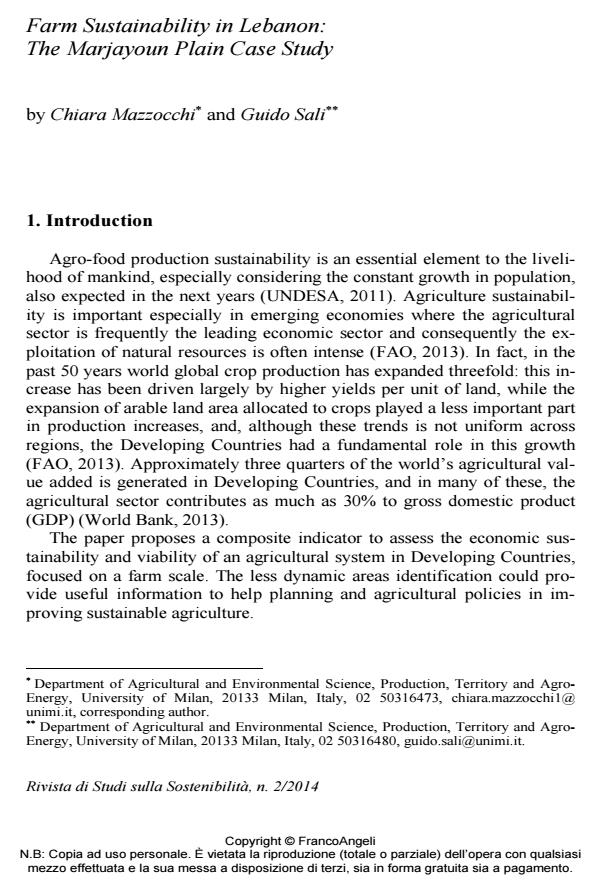Farm Sustainability in Lebanon: The Marjayoun Plain Case Study
Titolo Rivista RIVISTA DI STUDI SULLA SOSTENIBILITA'
Autori/Curatori Chiara Mazzocchi, Giudo Sali
Anno di pubblicazione 2014 Fascicolo 2014/2
Lingua Italiano Numero pagine 14 P. 223-236 Dimensione file 229 KB
DOI 10.3280/RISS2014-002014
Il DOI è il codice a barre della proprietà intellettuale: per saperne di più
clicca qui
Qui sotto puoi vedere in anteprima la prima pagina di questo articolo.
Se questo articolo ti interessa, lo puoi acquistare (e scaricare in formato pdf) seguendo le facili indicazioni per acquistare il download credit. Acquista Download Credits per scaricare questo Articolo in formato PDF

FrancoAngeli è membro della Publishers International Linking Association, Inc (PILA)associazione indipendente e non profit per facilitare (attraverso i servizi tecnologici implementati da CrossRef.org) l’accesso degli studiosi ai contenuti digitali nelle pubblicazioni professionali e scientifiche
Agricultural system sustainability is influenced by different factors related to local agricultural structure. The impact of these factors on the farm functionality may provide an estimate, albeit crude, of the agricultural system dynamism and weaknesses. The paper proposes a tool useful for territory planning and agricultural policies programs to assess the viability of an agricultural system in Developing Countries, focused on a farm scale. The methodology is based on some agricultural variables affecting farm functionality and stability. The analysis was applied to the Marjayoun Plain, a Lebanese agricultural enclave. The results clearly disclose the existence of some vulnerability areas in the Plain but also some positive elements in terms of sustainability. The results are mapped by Geographical Information Systems tools.
Parole chiave:Sostenibilita, resilienza delle aziende agricole, sicurezza alimentare, Geographical Information System, PCA, Libano
Chiara Mazzocchi, Giudo Sali, Farm Sustainability in Lebanon: The Marjayoun Plain Case Study in "RIVISTA DI STUDI SULLA SOSTENIBILITA'" 2/2014, pp 223-236, DOI: 10.3280/RISS2014-002014